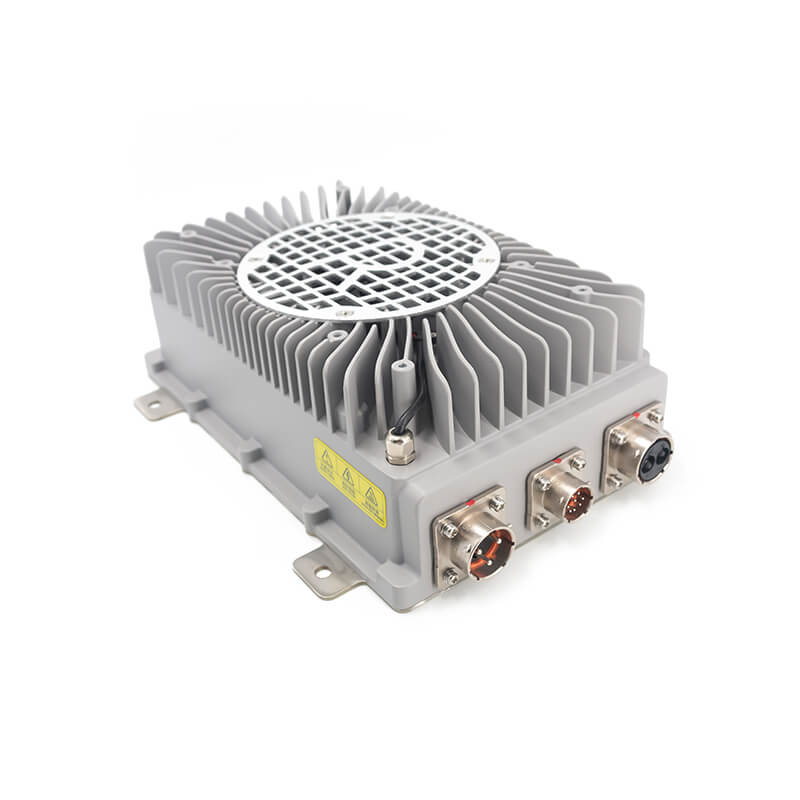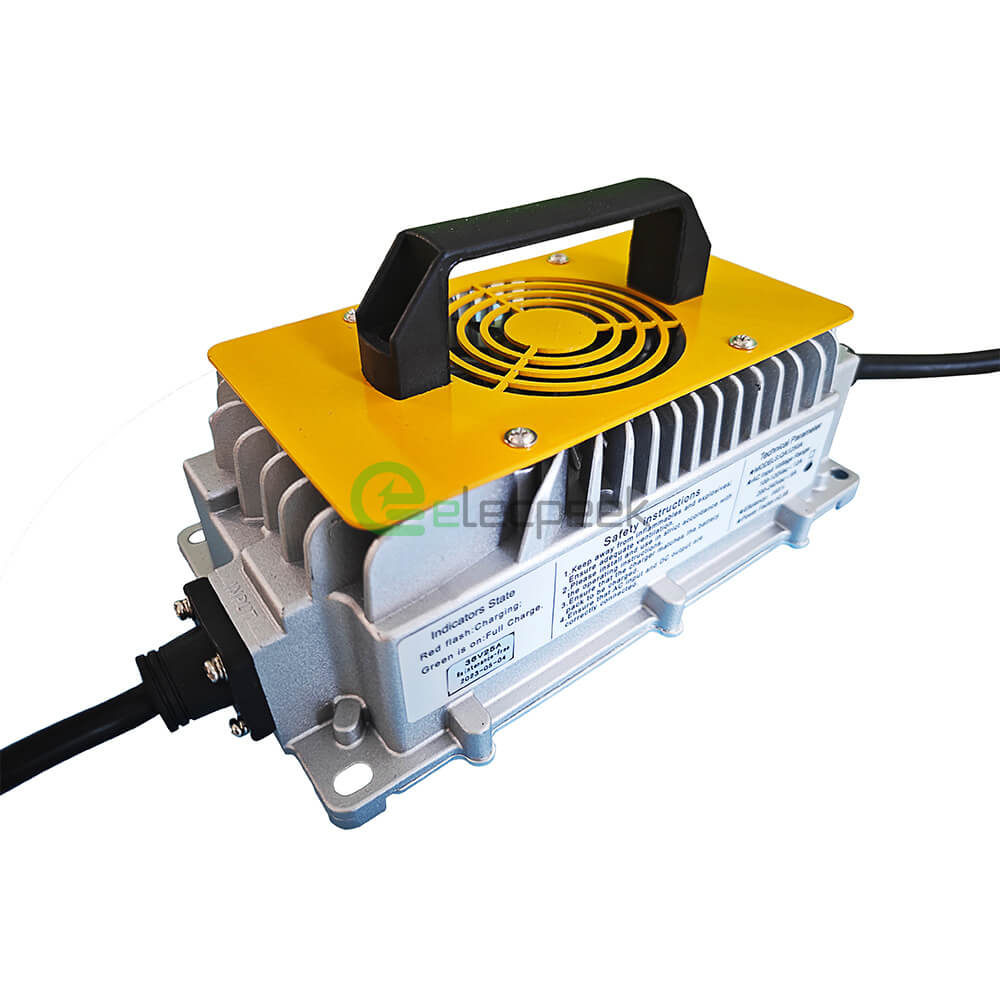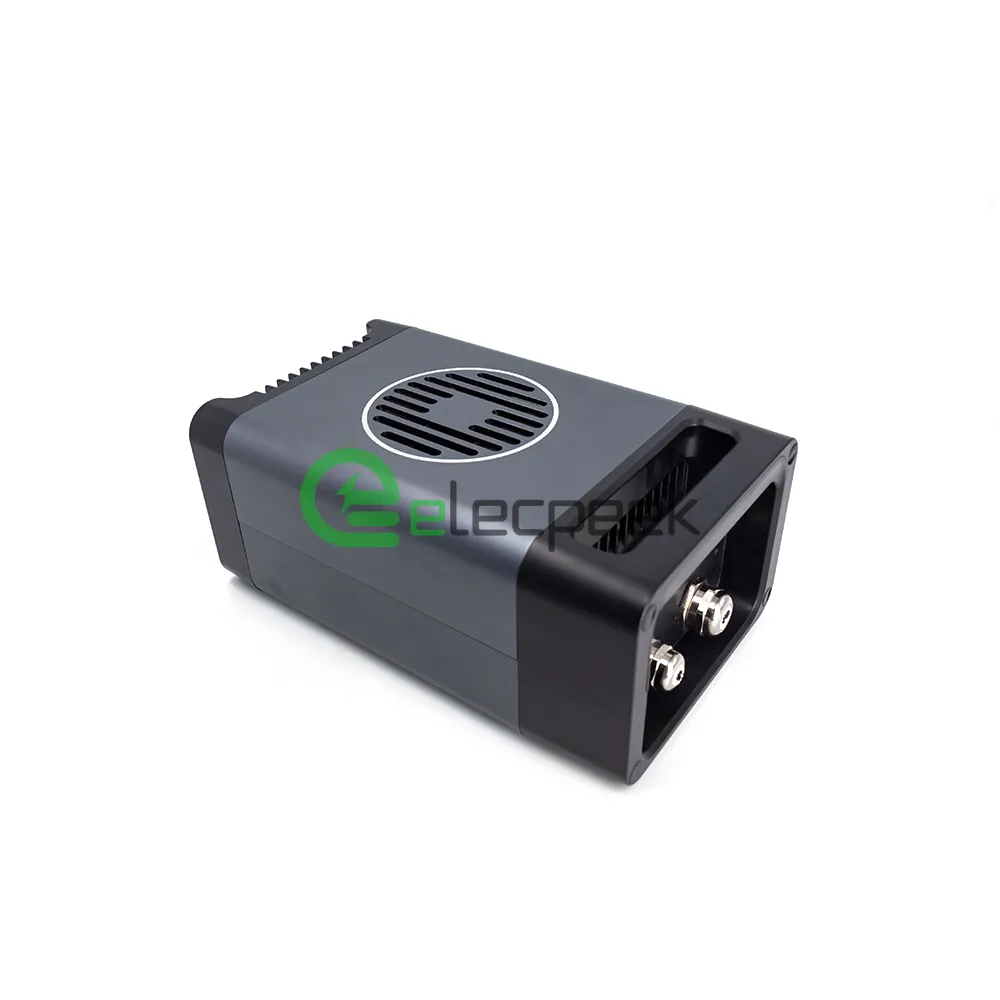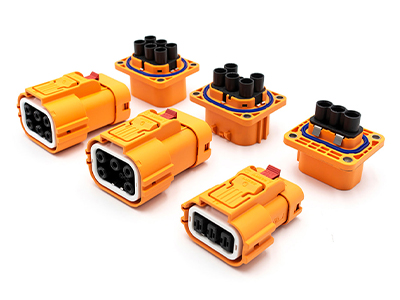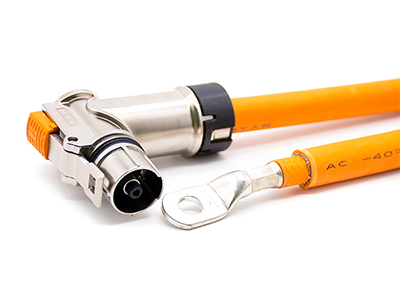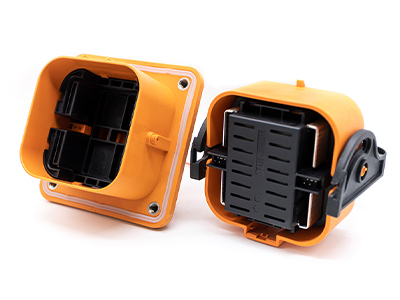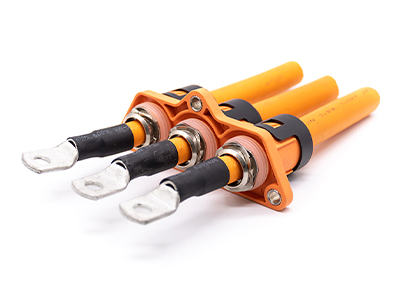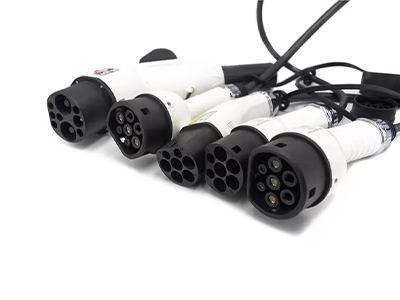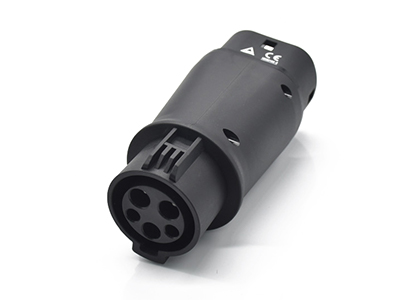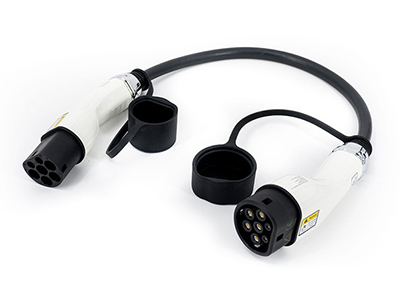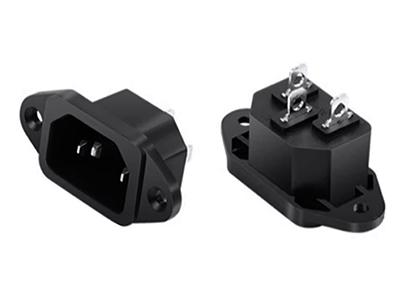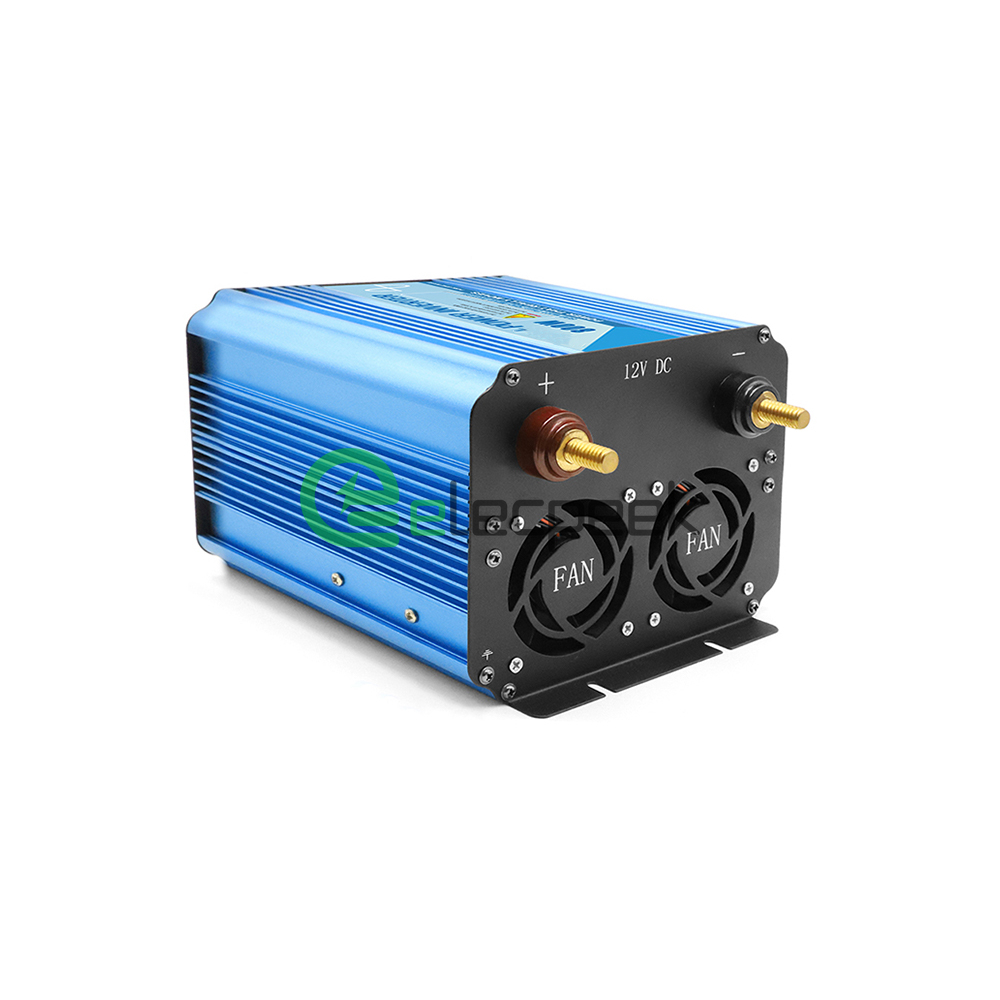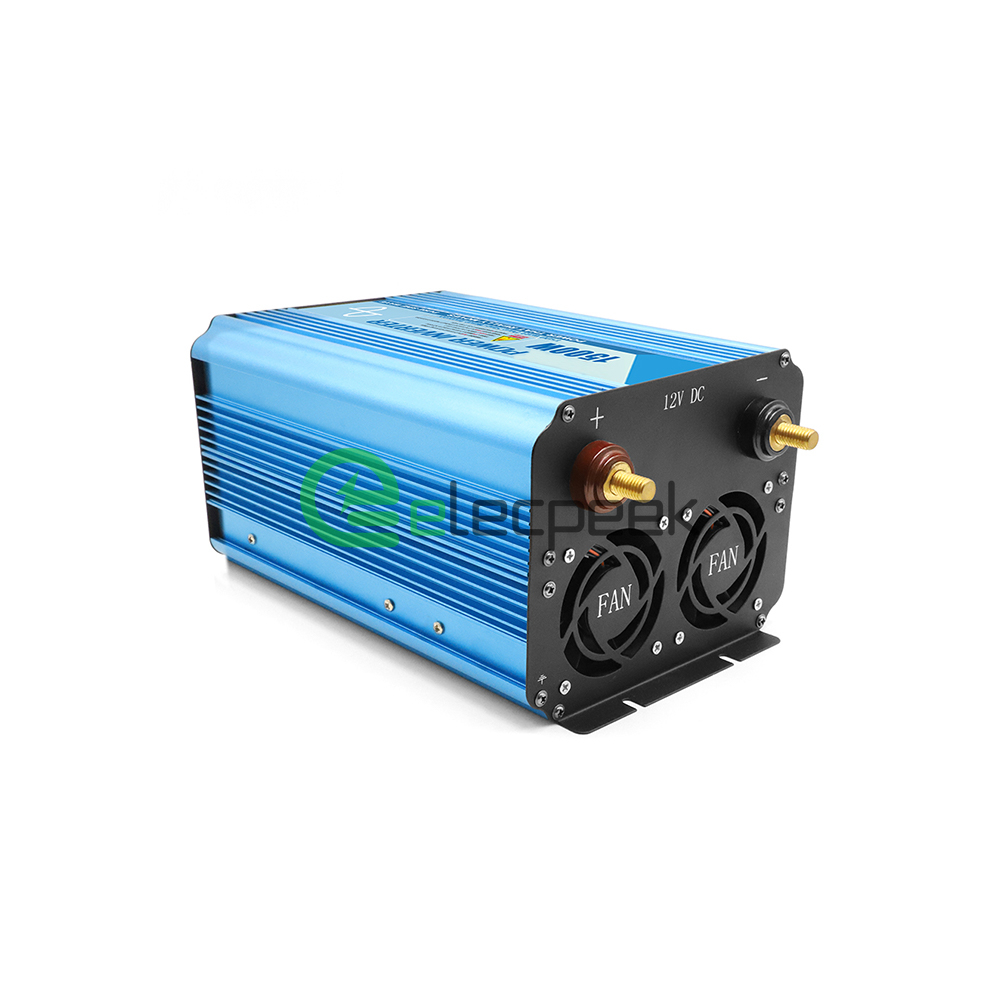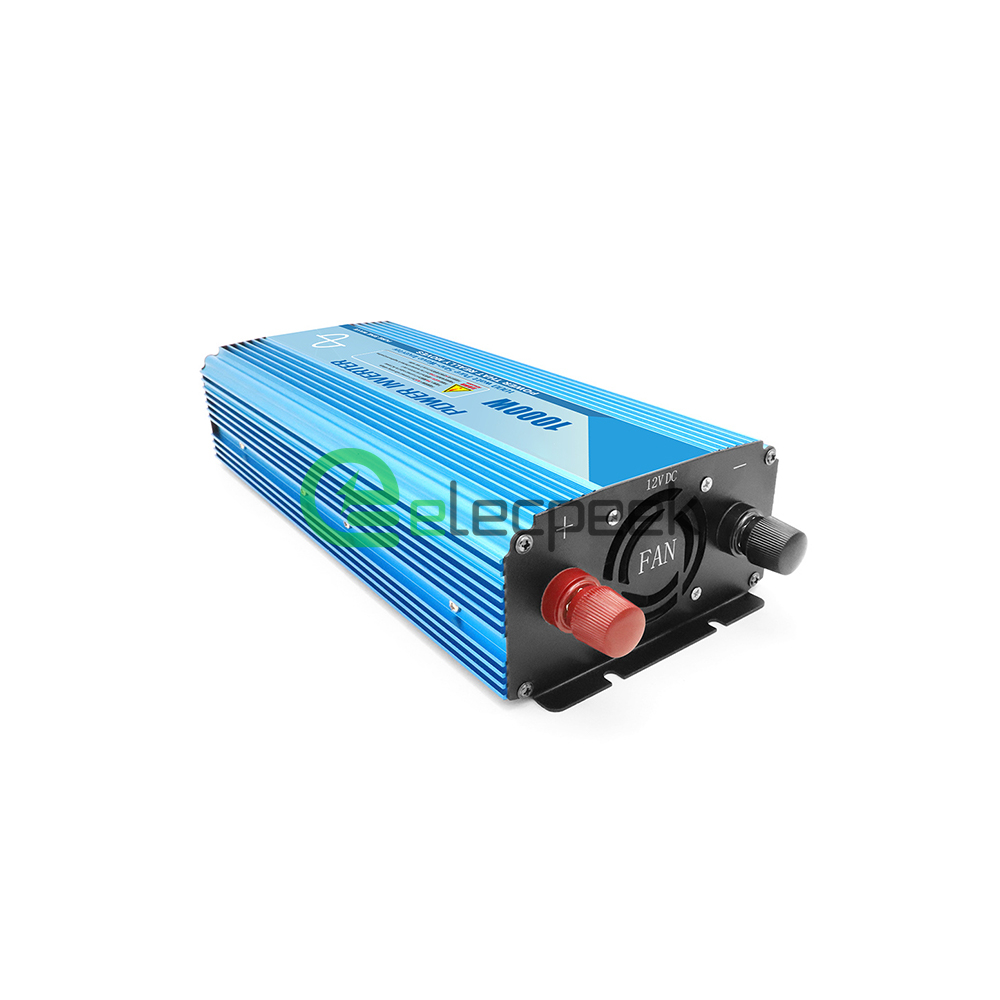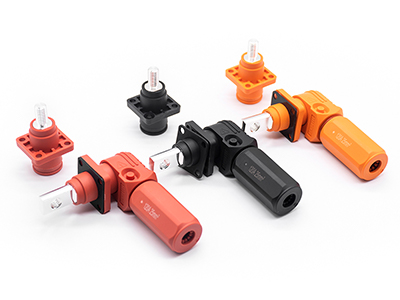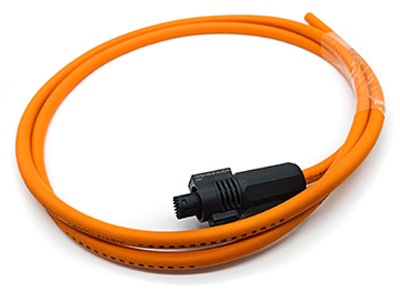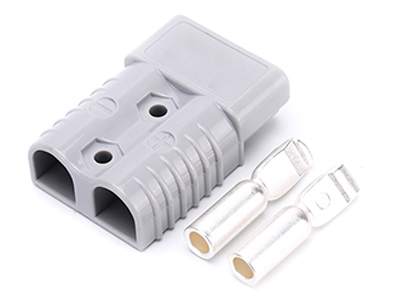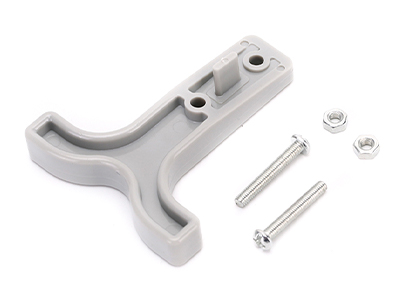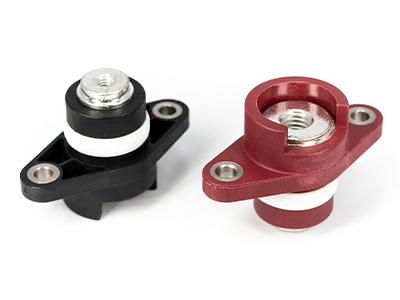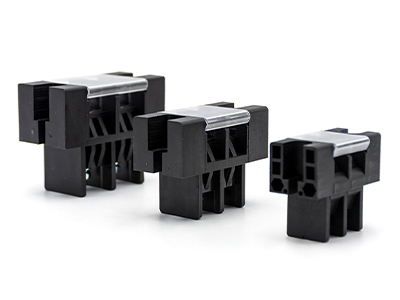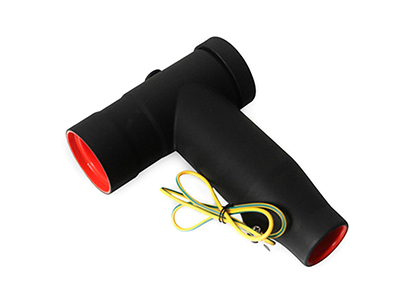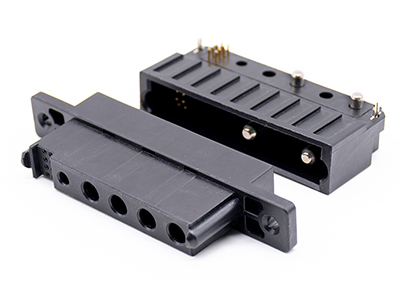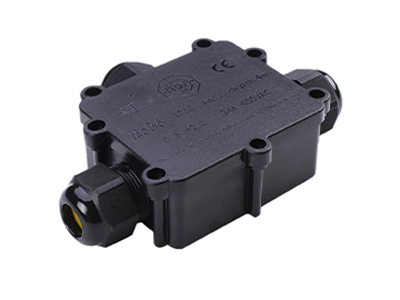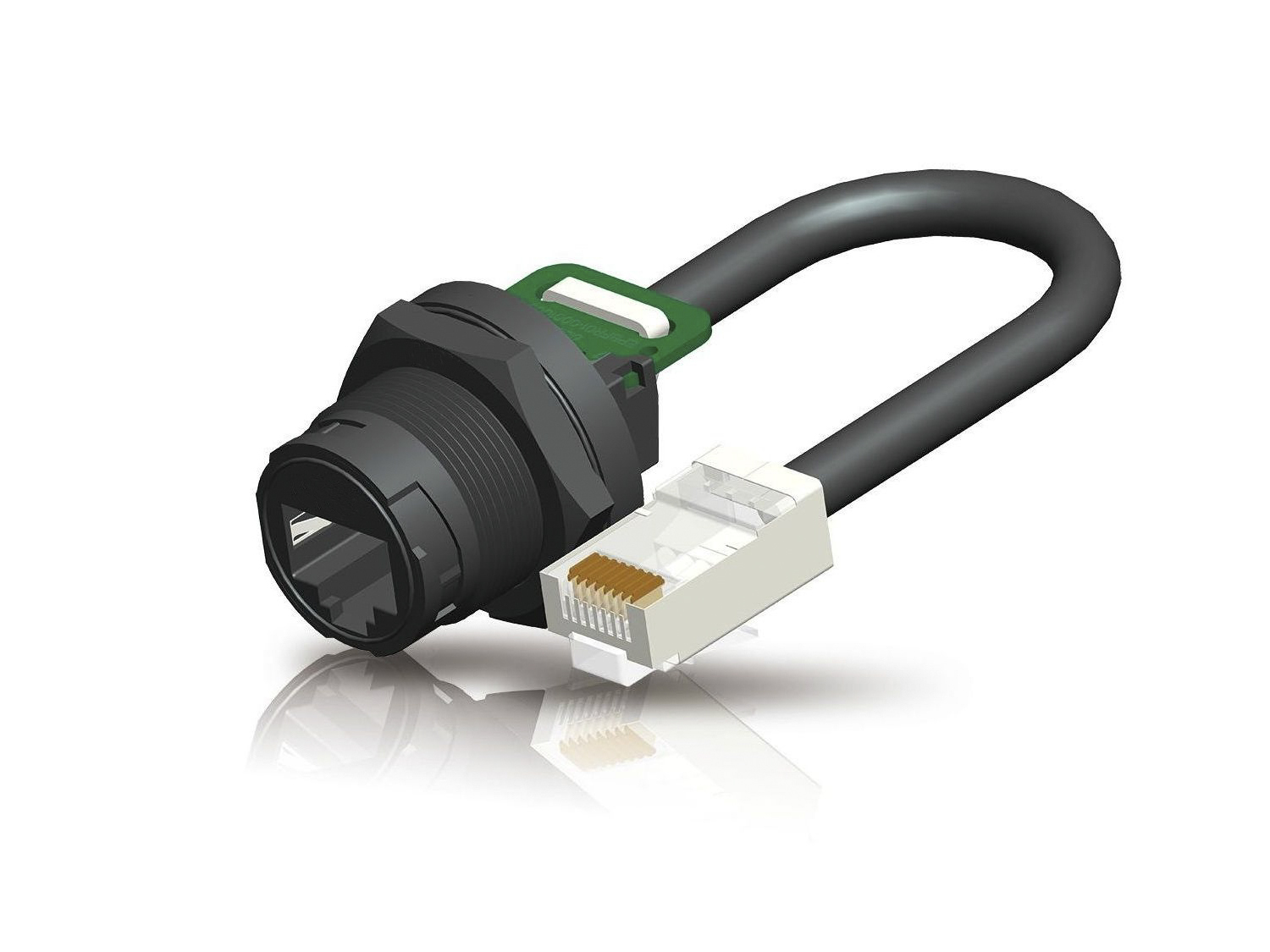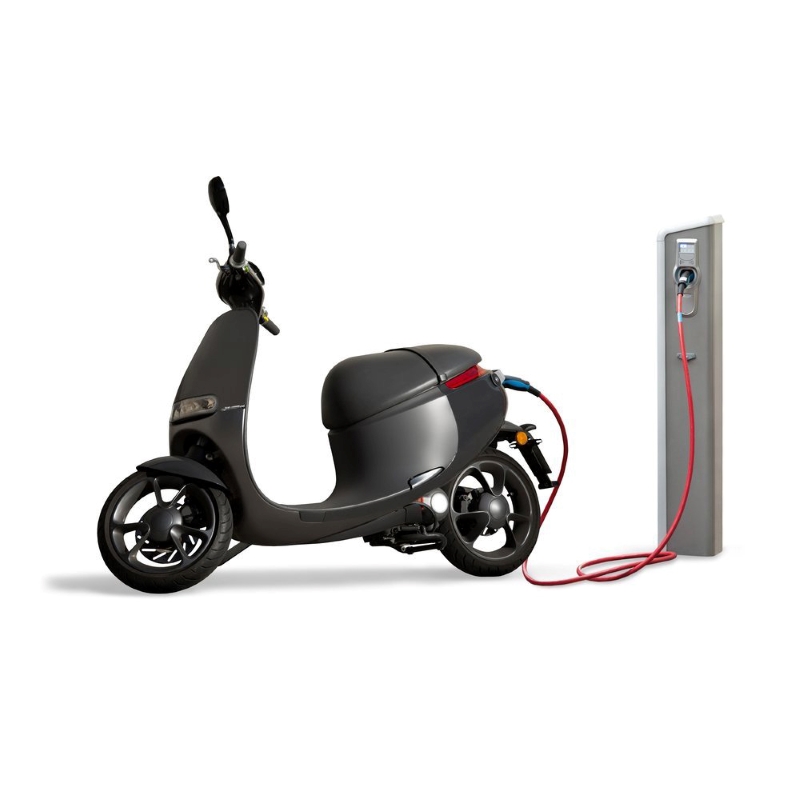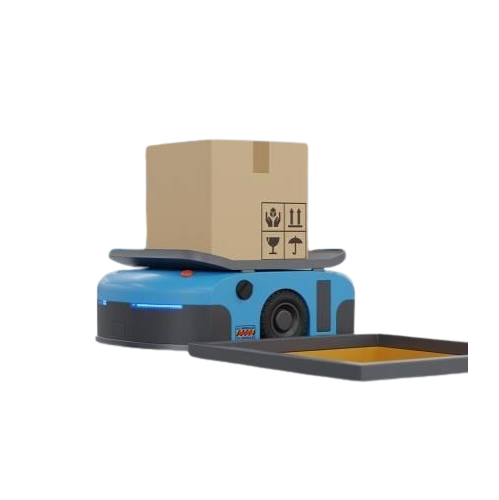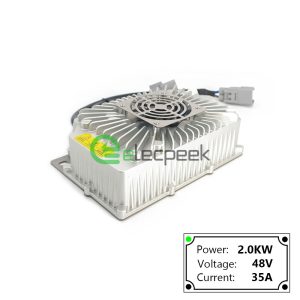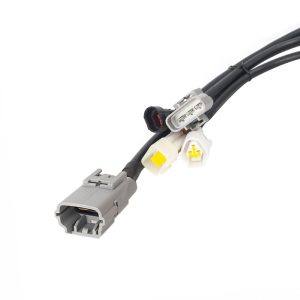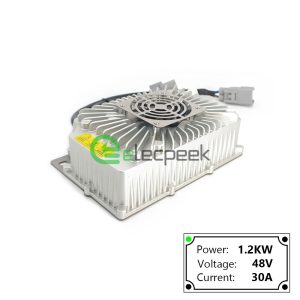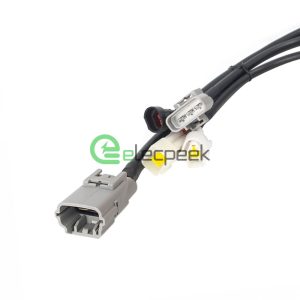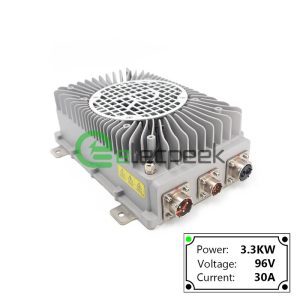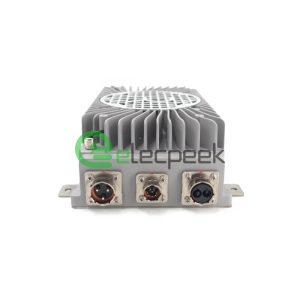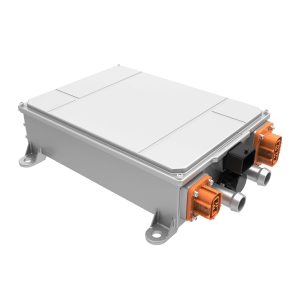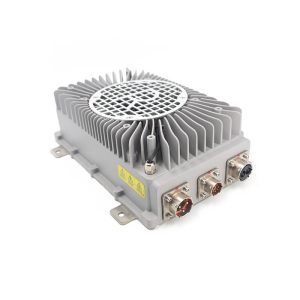News
Why OBC is Improtant for AGVs?
AGV robots are utilized in various logistics operations, including the distribution of stock across different storage areas, loading and unloading goods in receiving and dispatch zones, and performing other essential tasks. Due to their capability to transport heavy loads, AGV robots are also employed in production centers to move parts of various sizes to assembly lines. Here we will explore the primary applications of AGVs and highlights the significance of on-board chargers in their operation.
What is the AGV and OBC?
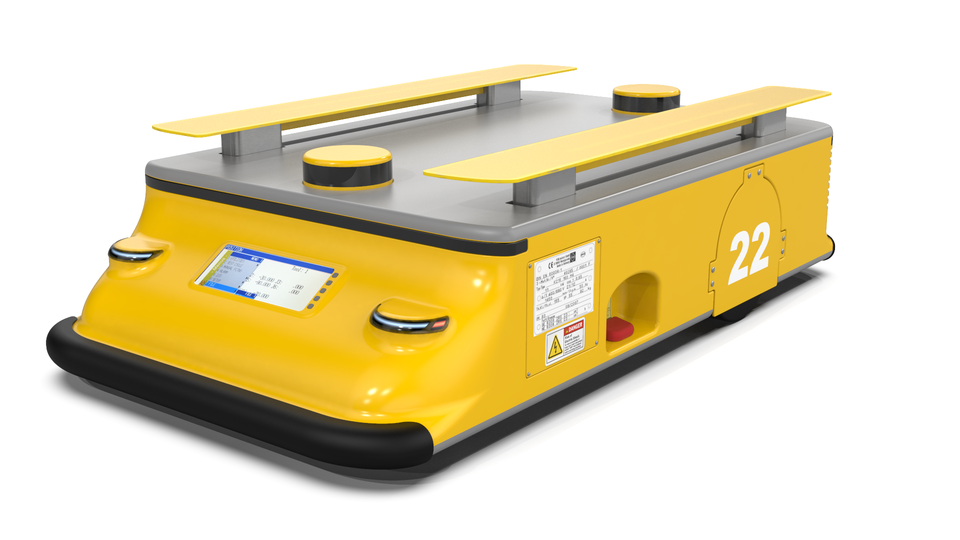
An automated guided vehicle (AGV), different from an autonomous mobile robot (AMR), is a portable robot that follows along marked long lines or wires on the floor, or uses radio waves, vision cameras, magnets, or lasers for navigation. They are most often used in industrial applications to transport heavy materials around a large industrial building, such as a factory or warehouse.
An on board charger (OBC) is a power electronics device in electric vehicles (EVs) that converts AC power from external sources, such as residential outlets, to DC power to charge the vehicle’s battery pack.The OBC communicates with the vehicle controller and charging station to determine the proper amount of current/power and the correct charging standard to be applied.
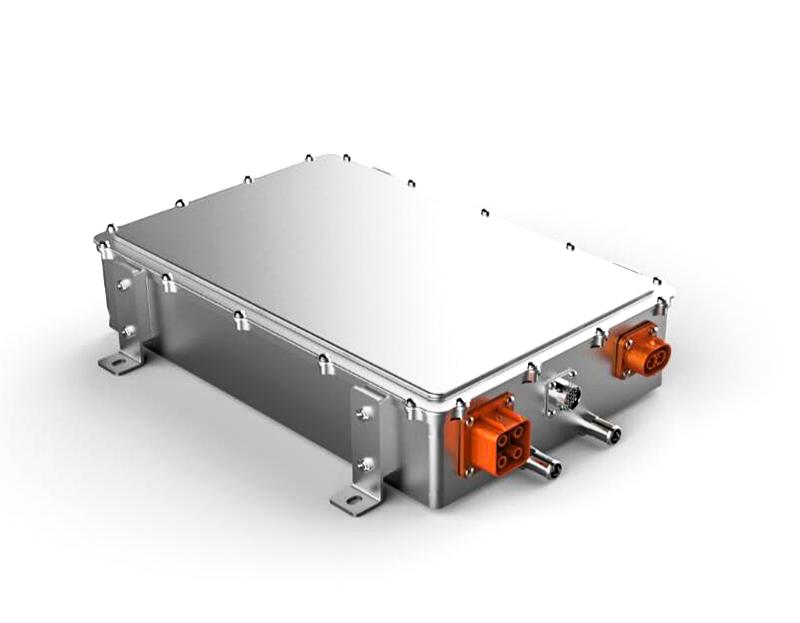
Five Advantages of OBC
With AGVs being used in such a wide range of applications, it is crucial to ensure that they can continue to work effectively, one critical element of these power systems is the on-board charger.
An on-board charger is a device integrated into the AGV that allows the vehicle to charge its battery without needing to dock at a fixed charging station. This integration provides several key benefits:

1. Continuous Operation: On-board chargers enable AGVs to charge their batteries during short breaks or downtime periods, such as during loading and unloading. This capability minimizes the need for extended downtime solely for charging, ensuring that the AGV can operate continuously.
2. Efficiency and Productivity: By utilizing on-board chargers, AGVs can maximize their operational time. Since charging can occur during regular operation cycles, AGVs can complete more tasks within the same time frame compared to systems that require periodic docking at a central charging station.
3. Autonomous Navigation: On-board chargers support the autonomous nature of AGVs by allowing them to navigate through facilities and find opportunities to charge without human intervention. This autonomy is crucial for optimizing workflow and reducing manual oversight.
4. Flexibility in Facility Layout: Facilities using AGVs with on-board chargers have greater flexibility in their layout. They do not need to design specific areas for charging stations, which can be space-consuming and limit operational efficiency. This flexibility can lead to better space utilization and easier adaptation to changing operational needs.
5.Safety: On-board chargers contribute to the safety of AGV operations. They ensure that vehicles maintain an adequate charge level, reducing the risk of unexpected power failures that could lead to accidents or disruptions in automated processes.
How Does the On-Board Charger Work for AGV?
On-board chargers for Automated Guided Vehicles (AGVs) play a crucial role in maintaining continuous operations by converting alternating current (AC) from the mains power supply to direct current (DC) that is compatible with the AGV’s battery. This conversion is managed by an integrated Battery Management System (BMS), which constantly monitors the battery’s state of charge, voltage, temperature, and overall health. The BMS ensures that the charging process is optimized and safe, preventing issues like overcharging and overheating, which can extend the battery’s lifespan. The charging process typically involves three stages:
- bulk charging, where the battery is rapidly charged with high current
- absorption charging, where the current is reduced as the battery nears full capacity
- and float charging, which maintains the battery at full charge with a small, steady current
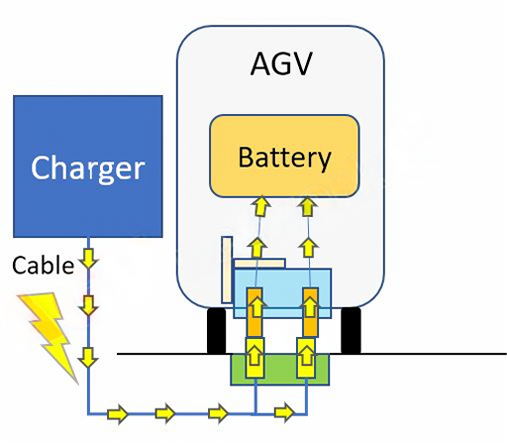
On-board chargers allow AGVs to recharge during brief pauses in operation, either through conductive charging, which involves physical connectors, or inductive charging, which uses electromagnetic fields for wireless energy transfer. This capability significantly enhances operational flexibility, as AGVs are not restricted to fixed charging stations and can recharge at various points within the facility. Additionally, on-board chargers help reduce infrastructure costs by eliminating the need for an extensive network of fixed charging stations. By enabling AGVs to maintain their charge without significant downtime, on-board chargers ensure that these vehicles can perform their tasks continuously and reliably, thus optimizing productivity in various industrial applications. Below picture may show how the current goes to the AGV.
How We Choose the Correct One ?
After understanding the importance of on-board chargers to ensure the efficient work of AGVs, how to choose the right on-board chargers? You may consider some main steps, let’s explain this with an example:
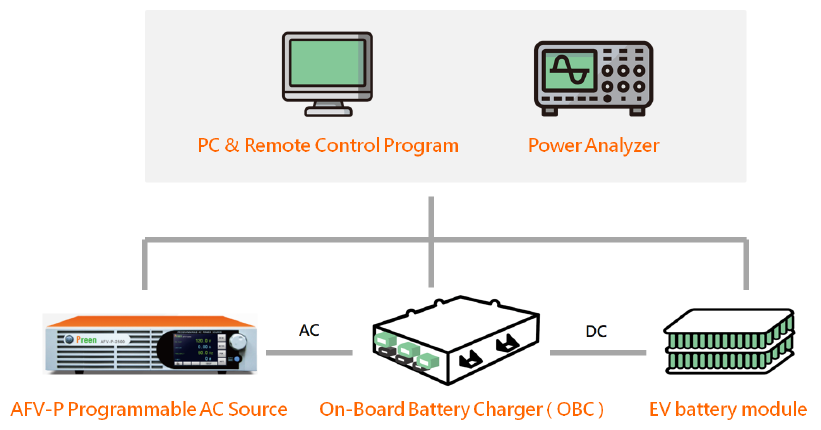
Step 1: Assess Battery Specifications
The AGVs in this warehouse use lithium-ion batteries with the following specifications:
– Voltage: 48V
– Capacity: 200 Ah
Step 2: Determine Charging Speed Requirements
The warehouse operates 24/7, and AGVs need to be available throughout the day. A rapid charging solution is necessary to minimize downtime. Therefore, the desired charging time is around 2 hours.
Step 3: Calculate Required Charger Power
To determine the appropriate charger power:
Charger Power (kW) ={Battery Voltage (V)*Battery Capacity (Ah)}/1000
For a 2-hour charge time:
Charger Power (kW) = (48V*200A)/2}= 4800 W /1000= 4.8kW
Step 4: Evaluate Power Source Compatibility
The warehouse’s power supply supports 230V AC, and the electrical infrastructure can handle the load required by multiple 4.8 kW chargers simultaneously.
Step 5: Consider Physical Dimensions and Integration
The selected on-board charger should fit within the available space on the AGV without affecting its maneuverability. The size and weight of a typical 4.8 kW charger are suitable for integration into the warehouse’s AGVs.
Step 6: Verify Durability and Reliability

Given the 24/7 operation in a warehouse environment, the on-board charger must be robust and reliable. The chosen charger should be industrial-grade, with a proven track record of performance in similar applications.
Step 7: Ensure Safety Features
The on-board charger should include critical safety features such as:
– Overcharge protection
– Temperature monitoring
– Short-circuit protection
– Automatic shutoff when the battery is fully charged
Step 8: Check for Energy Efficiency
An energy-efficient charger is preferred to minimize operational costs. The charger should have an efficiency rating of at least 90%, ensuring most of the input energy is converted into stored energy in the battery.
Step 9: Confirm Integration with AGV Systems
The on-board charger must be compatible with the AGV’s Battery Management System (BMS) and control system, ensuring seamless communication and optimal charging performance.
Step 10: Evaluate Support and Service
The charger manufacturer should provide comprehensive technical support and after-sales service, ensuring any issues can be promptly addressed to minimize downtime.
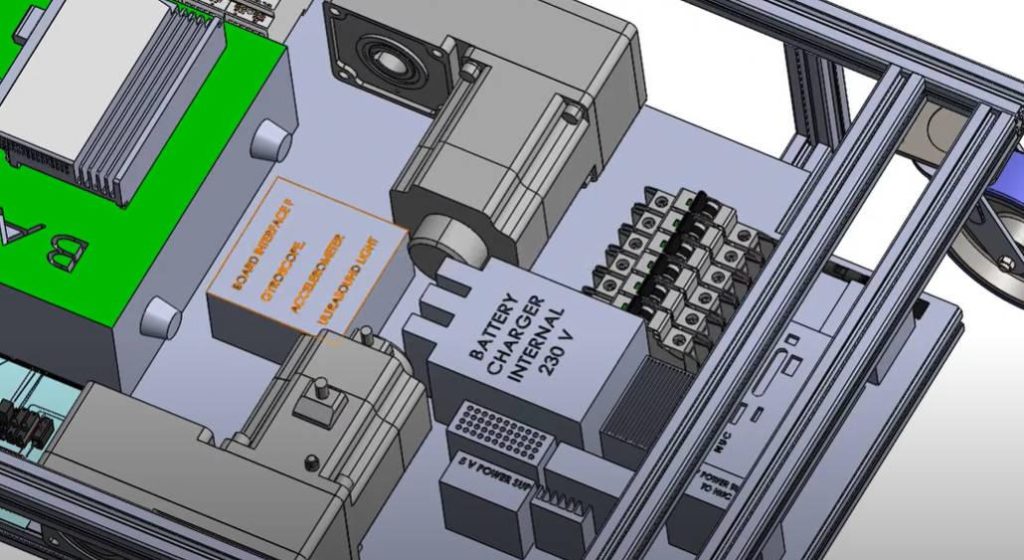
Selected On-Board Charger,based on these criteria, the warehouse selects a 4.8 kW on-board charger with the following features:
– Compatible with 48V, 200 Ah lithium-ion batteries
– Capable of charging within 2 hours
– Suitable for 230V AC power supply
– Compact and lightweight design
– Industrial-grade durability and reliability
– Essential safety features
– 92% energy efficiency
– Seamless integration with the AGV’s BMS and control system
– Strong technical support and service from the manufacturer
By following this step-by-step process, the warehouse ensures it chooses an on-board charger that meets its operational requirements, providing continuous, efficient, and safe charging for its AGVs, ultimately enhancing productivity and reducing downtime.
Application of AGV
AGVs come in various shapes and sizes, each tailored to specific tasks, below are the primary applications you may concern
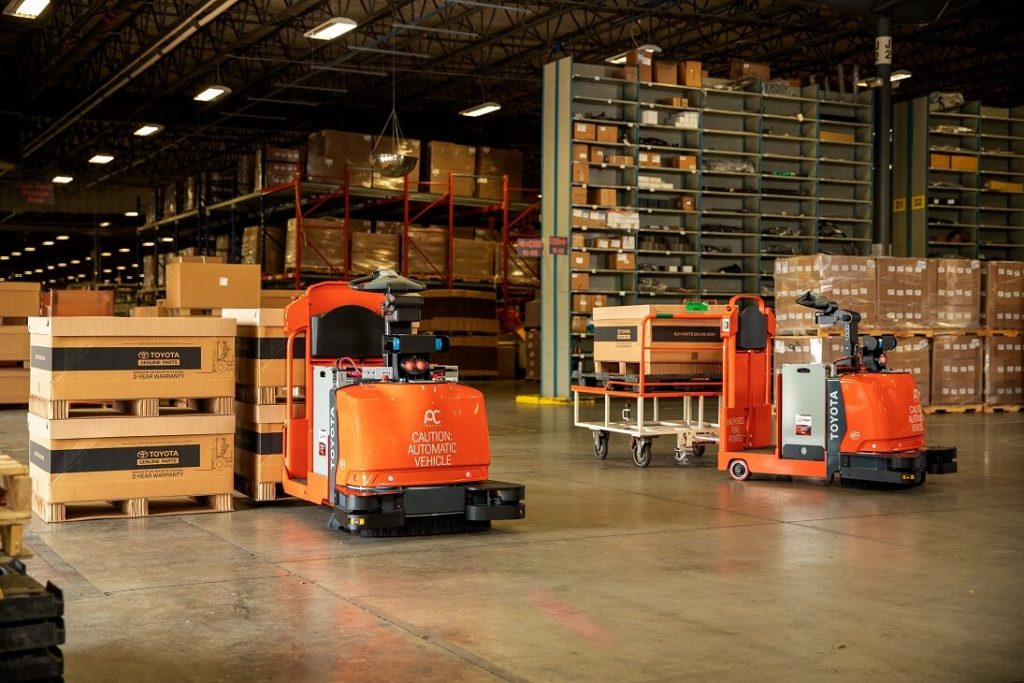
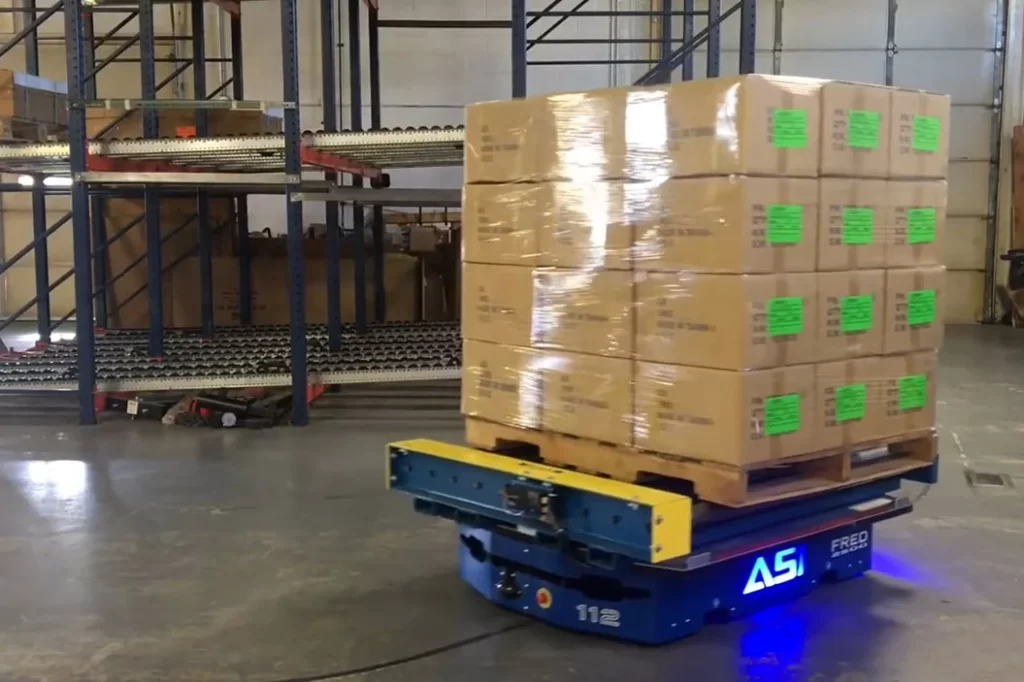

Truck Loading and Unloading
AGV robots can function like forklifts or other conventional handling equipment. They can autonomously load and unload goods from trucks, ensuring efficient and consistent operations.
Product Storage and Retrieval
AGV robots are adept at placing items in designated storage locations and moving goods to order fulfillment areas. This process enables agile, safe, and automated replenishment of racks and pick stations, benefiting both products and operators.
Connection with Production Centers
AGV robots can be configured to transport large, heavy, and bulky goods, making them ideal for warehouses near production centers. These vehicles efficiently transport loads to assembly lines, particularly in industries such as automotive and aerospace.
Distribution for Kitting
AGV robots not only move heavy goods but also distribute stock in facilities with kitting stations. By following predetermined routes, these autonomous vehicles streamline the replenishment of goods to various kit assembly stations, delivering the exact quantities required.
Industry Applications
AGV robots are employed across numerous sectors, including manufacturing (e.g., just-in-time environments where they supply the production line with goods as needed), food and beverage, pharmaceutical, and automotive industries.
Conclusion
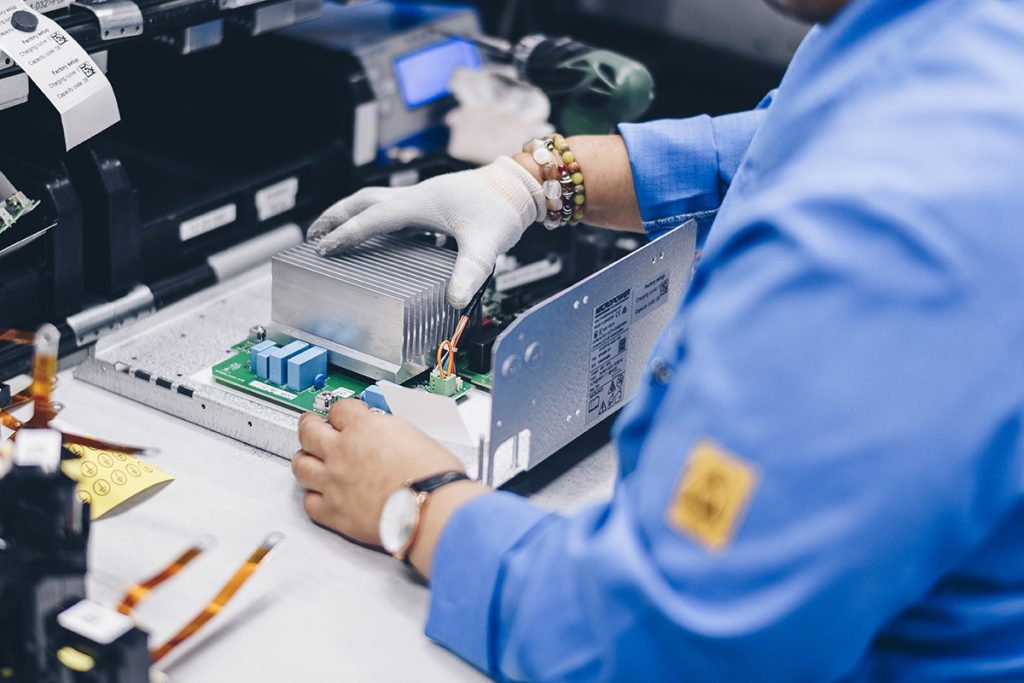
Selecting the right on-board charger for AGVs involves a comprehensive evaluation of compatibility, performance, durability, safety, and cost. By considering these factors, you can ensure that your AGVs operate efficiently and reliably, maximizing their productivity and lifespan in industrial environments. Welcome you to contact us for providing solutions and options for your AGVs.
About OBC Related Products

Get in Touch
Elecpeek has been engaged in the connector and cable industry for more than 15 years, providing customers with a one-stop experience. If you have any needs for related products, please feel free to contact us.
Mobile:(+86)18086610187
Email:[email protected]

